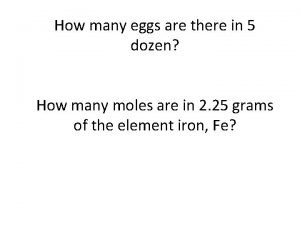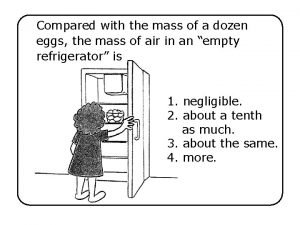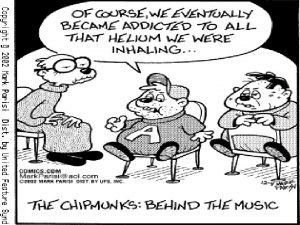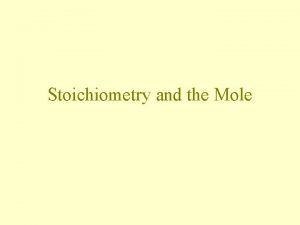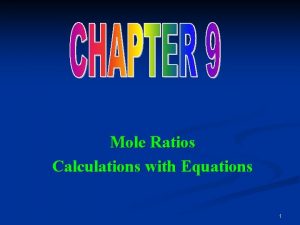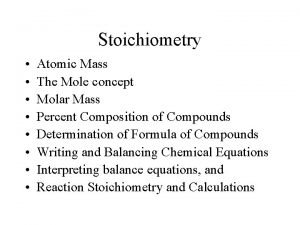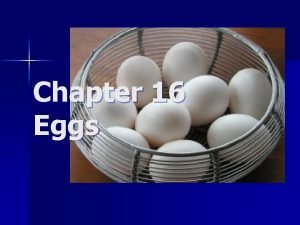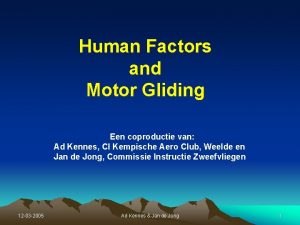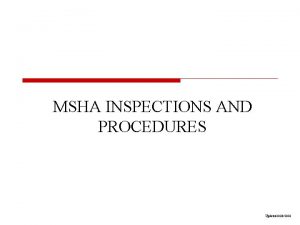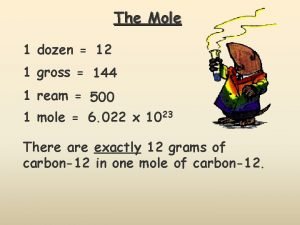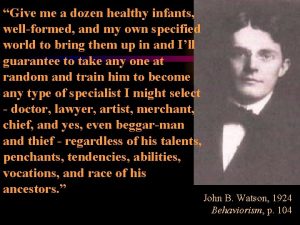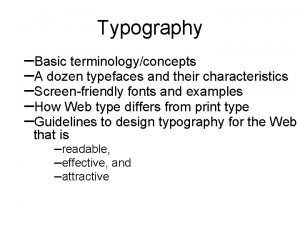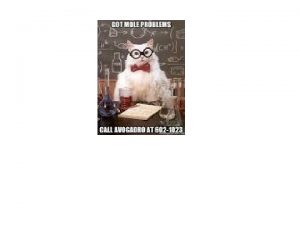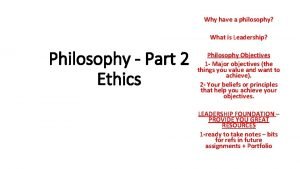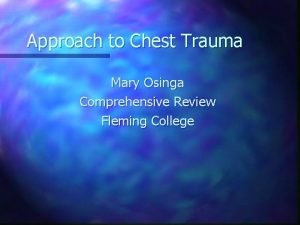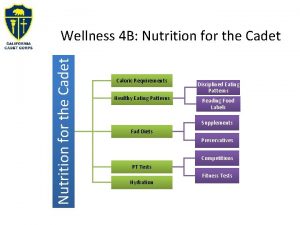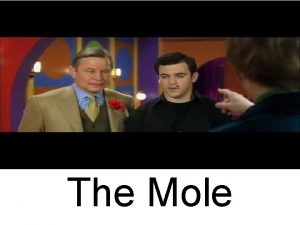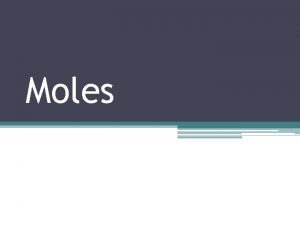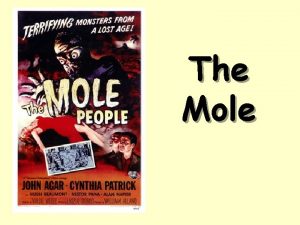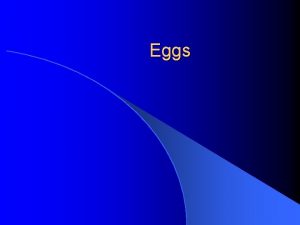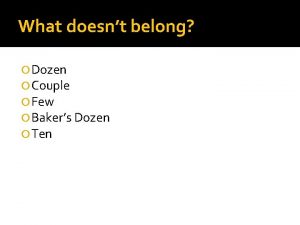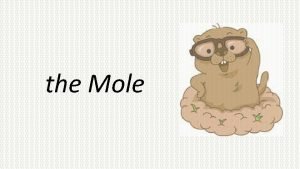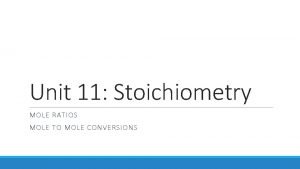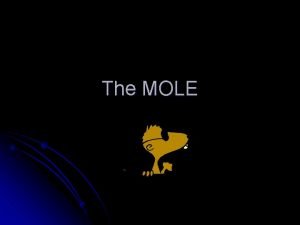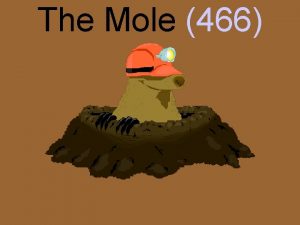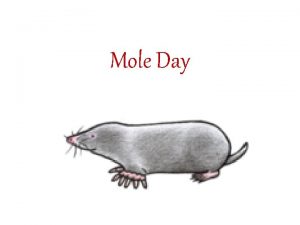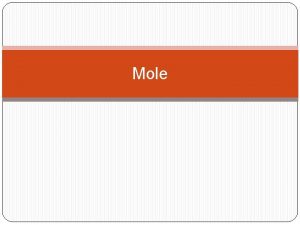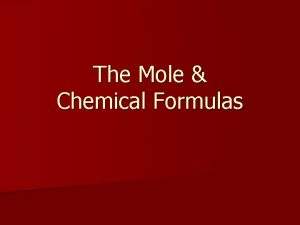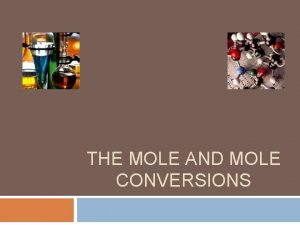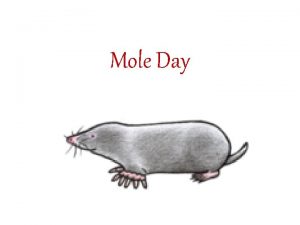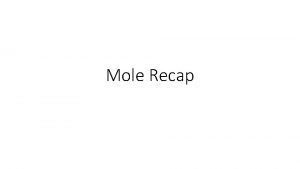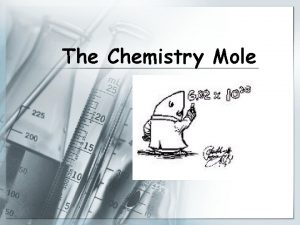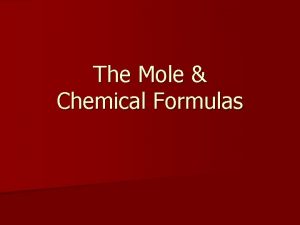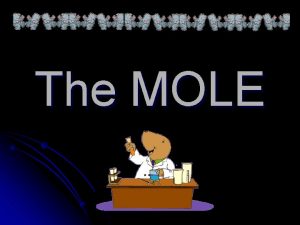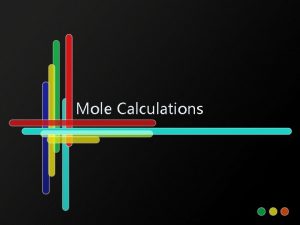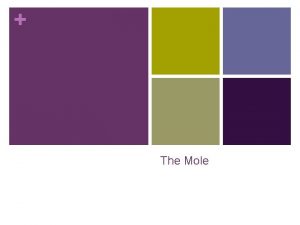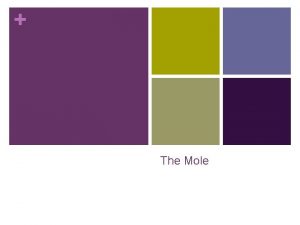The Mole 1 dozen eggs 12 eggs 1




























- Slides: 28

The Mole

1 dozen eggs = 12 eggs 1 Ream of paper = 500 sheets of paper 1 Gross pencils = 144 pencils

The Mole • 1 mole = 6. 022 x 1023 things – Avogadro’s number • The number of carbon atoms in 12 g of C-12 • Abbreviation: “mol” How much does this weigh?

• 1 mole C atoms = 6. 022 x 1023 Carbon atoms • 6. 022 x 1023 Carbon atoms = 1 mole of carbon atoms • 1 mole bicycles = 6. 022 x 1023 bicycles • 6. 022 x 1023 bicycles = 1 mole of bicycles • 1 mole of anything = 6. 022 x 1023 items of anything • 6. 022 x 1023 items of anything = 1 mole of anything

Cu, Al, Pb, S, Mg, Cr

Molar Mass • The mass, in grams, of one mole of any element or compound • Abbreviated with capital, italicized M • Unit = grams/mole = g/mol • Also called Formula Mass and Formula Weight

Problems 1) You need 0. 250 mol Cu for an experiment, how many grams should you use? How many atoms of Cu is this? 2) You have 145. 9 g Hg. How many moles are present? If Hg has a density of 13. 53 g/m. L, what volume do you have?

Cl. Na+ 3) Write the molecular formula or formula unit for the compounds above. 4) What are the molecular and formula weights for the compounds above? 5) What is the mass of 1. 34 mole of the first compound? What is the mass of carbon in this sample? Cl- Cl. Na+ 6) How many moles of Sodium Chloride are present in 9. 29 g? How many moles of sodium are present in the sample? 7) How many oxygen atoms are there in 5. 62 g of Carbon Dioxide?

10) Your nurse gives you 10. 0 g morphine, C 17 H 19 NO 3 , for pain. How many moles is this? How many grams of oxygen are present in this dose of analgesic?

Chemical Equations Coefficient Physical State Subscript H 2 (g) + Cl 2(g) 2 HCl (g) Reactants Product(s)

Law of Conservation of Matter/Mass • Matter is neither created, nor destroyed, but is merely rearranged • The mass of the reactants must equal the mass of the products • H 2 (g) + Cl 2(g) 2 HCl (g)

Balancing Chemical Equations Zn(s) + HCl(aq) H 2(g) + Zn. Cl 2(aq) 1) 2) 3) 4) Write the unbalanced equation Balance the atoms of one element Choose another element and balance it Continue until all elements have the same number of atoms on both sides of the equation 5) Check yourself

Problems 1) 2) 3) 4) __ N 2(g) + __ H 2(g) __ NH 3(g) __ Fe(s) + __ Cl 2(g) __ Fe. Cl 3(s) __NH 3(g) + __O 2(g) __NO(g) + __H 2 O(g) __C 5 H 12(l) + __O 2(g) __CO 2(g) + __H 2 O(g)

General Reactions • Combination rxns: 2 or more substances react to form a single product • 2 H 2 + O 2 2 H 2 O

• Decomposition rxns: single substance decomposes into 2 or more products • opposite of combination rxns • 2 H 2 O 2 H 2 + O 2


• Single replacement/displacement: one element reacts with a compound to form a new compound and release a new element • 2 Na + 2 H 2 O 2 Na. OH + H 2

• Exchange or Double replacement/displacement: an interchange of partners between two compounds • Pb(NO 3)2(aq) + K 2 Cr. O 4(aq) Pb. Cr. O 4(s) + 2 KNO 3(aq)

• Combustion rxns: the burning of a compound, usually a hydrocarbon, in oxygen to form heat, carbon dioxide and water

Problems Balance the following equations and identify the type of reaction present. 1)__C 3 H 8(g) + __O 2(g) __CO 2(g) + __H 2 O(g) 2)__Ba. Cl 2(aq) + __Na 2 SO 4(aq) __Ba. SO 4(s) + __Na. Cl(aq) 3)__Fe(s) + __H 2 O(l) __Fe 3 O 4(s) + __H 2(g) 4)__Pt(s) + __F 2(g) __Pt. F 4(l) 5)__H 3 BO 3(s) __B 2 O 3(s) + __H 2 O(l) 6)__C 4 H 10(g) + __O 2(g) __CO 2(g) + __H 2 O(g)

Stoichiometry Problems 1) If you have 10. 0 g C 4 H 10 (butane), how many grams of water can you make upon combustion? 2) How much O 2 do you need in problem 1 if you’d like to produce 7. 39 g CO 2? 3) How much CO 2 is produced upon combustion of 4. 3 g of propane (C 3 H 8)?

4) Using the equation below, calculate the amount of glucose you started with if you produced 12. 76 g CO 2? 5) How much glucose was consumed in order to produce 100. 0 m. L of H 2 O? __C 6 H 12 O 6(s) + __O 2(g) __CO 2(g) + __H 2 O(l)

Jim Bob got a job at a chair factory. His boss tells him that he’s going to lunch and when he comes back, Jim Bob better have 5 chairs made or he’s fired. JB gets to work. He counts 32 arms, 18 legs, 4 backs, and 2 seats. Will JB get fired?

Limiting Reagent • Limiting Reagent/Reactant/Fact or: the reactant/factor that determines the amount of product formed • Other reactants are “in excess” • Cheaper reactants are usually in excess

Problems 1) You have 10. 0 moles H 2 and 1. 00 mol O 2. How much H 2 O can you make? 2) You combust 10. 2 mol propane in 7. 80 mol O 2. How much CO 2 can you produce?

3) If 2. 3 mol carbon disulfide reacts with 5. 4 mol oxygen to form carbon dioxide and sulfur dioxide, what mass of sulfur dioxide is formed? 4) 5. 50 g silicon dioxide reacts with 4. 71 g Carbon to from silicon carbide and carbon monoxide. What mass of carbon monoxide is formed?

Percent Yield • Theoretical Yield: the maximum possible quantity of product • 100% yield • Actual/Experimental Yield: quantity of product actually obtained • Percent Yield: efficiency of reaction • PY = (actual yield/theoretical yield) x 100

Problems 1) From the previous question, theoretical yield of CO is 5. 13 g. If you obtained 4. 32 g CO, what was your % yield? 2) You react 4. 41 mol carbon monoxide with 8. 39 mol hydrogen gas to get 122 g methanol. What is your percent yield?
 5 dozen
5 dozen Mass of a dozen eggs
Mass of a dozen eggs Mass of a dozen eggs
Mass of a dozen eggs Mole problem
Mole problem Stoichiometry mole-mole
Stoichiometry mole-mole Mole mole factor
Mole mole factor Mol si
Mol si Stoichiometry worksheet #2 (mole-mass mass-mole problems)
Stoichiometry worksheet #2 (mole-mass mass-mole problems) Mole mass and mole volume relationships
Mole mass and mole volume relationships Molar mass of sucrose
Molar mass of sucrose Selecting and storing eggs
Selecting and storing eggs Dirty dozen human factors nederlands
Dirty dozen human factors nederlands Msha dirty dozen
Msha dirty dozen Adipic acid empirical formula
Adipic acid empirical formula Watson give me a dozen healthy
Watson give me a dozen healthy Dozen font
Dozen font Mole background
Mole background Definite dozen
Definite dozen Deadly dozen itls
Deadly dozen itls Https://www.choosemyplate.gov/resources/myplateplan
Https://www.choosemyplate.gov/resources/myplateplan Pair dozen gross ream
Pair dozen gross ream điện thế nghỉ
điện thế nghỉ Một số thể thơ truyền thống
Một số thể thơ truyền thống Thế nào là hệ số cao nhất
Thế nào là hệ số cao nhất Trời xanh đây là của chúng ta thể thơ
Trời xanh đây là của chúng ta thể thơ Frameset trong html5
Frameset trong html5 So nguyen to
So nguyen to đặc điểm cơ thể của người tối cổ
đặc điểm cơ thể của người tối cổ Vẽ hình chiếu vuông góc của vật thể sau
Vẽ hình chiếu vuông góc của vật thể sau
